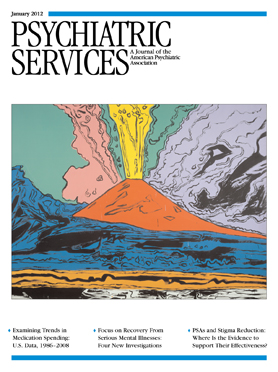Events Preceding Changes in Conflict and Containment Rates on Acute Psychiatric Wards
Abstract
Objective:
The main objective of this study was to learn more about what increases or decreases the likelihood of patient conflict (such as verbal abuse, violence, and rule breaking) and containment (such as seclusion, manual restraint, and enforced medication) events in acute inpatient psychiatric wards.
Methods:
Line graphs that mapped the total conflict and containment scores over two years on 16 acute inpatient psychiatric wards in the United Kingdom (London) were matched with chronological events that were documented in 120 qualitative semistructured interviews with ward managers and consultant psychiatrists during the same two-year period. Conflict and containment scores were derived from the validated Patient-Staff Conflict Checklist—Shift Report, which was completed by nurses at the end of each shift to log the frequency of conflict behaviors of patients and the staff containment measures.
Results:
A total of 463 score transitions (upturns and downturns) were identified in the graphs. A total of 323 events were matched to these transitions. A thematic analysis of these events produced 40 themes, which were organized into four categories: patient centered, staff centered, practice or ward centered, or other themes. Thirteen themes were significantly associated with conflict and containment score transitions, 11 of which were staff centered. For example, negative staff morale and staffing change resulting in a negative impact significantly increased the likelihood that conflict and containment would occur, whereas report of positive staff practice significantly decreased the likelihood of such events occurring.
Conclusions:
The results support the theory that ward staff play a crucial role in influencing the likelihood that conflict or containment events will occur in inpatient psychiatric settings. (Psychiatric Services 63:40–47, 2012)



